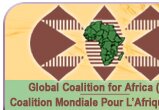|
Electoral Systems in African Countries
Although there are many variations, electoral systems fall into three main groups: plurality-majority; proportional representation, and semi-proportional representation. All three types are found in Sub-Saharan Africa, where 28 countries utilize some form of plurality-majority system, 14 use pure proportional representation, and 6 have systems of semi-proportional representation, as the following table indicates.
a. Plurality-majority systems usually feature single member districts, although they can have multi-member districts. First past the post systems are the most common and simplest version of plurality-majority arrangements. They use single member districts and the winner is the candidate who obtains the most votes. A variation is the block vote, in which the plurality majority system is used with multi-member districts, so that voters can vote for as many candidates as there are seats to be filled. The winners are the candidates with the most votes. In some block vote arrangements, voters choose between individual candidates, whereas in others they vote for parties. The two-round system is another variation, in which a second or run-off election is held to ensure that the winner obtains an absolute majority of votes. In Africa, the vast majority of plurality-majority systems utilize first past the post arrangements, although several francophone countries use two round systems.
b. Proportional representational systems are designed to ensure that the proportion of parliamentary seats won by a party is broadly similar to the percentage of votes it gets. While there are a number of different arrangements which ensure proportionality, those African countries adopting proportional representational systems have to date relied on party lists (see following table). Under this system, voters are presented with party lists at the national or local level, and they vote for the parties. Parties win seats according to their share of the vote, and select candidates on the basis of their position on the lists. Most proportional representational systems have thresholds which must be achieved before seats can be won. In some instances, voters can indicate a preference for a candidate as well as for a party.
c. Semi-proportional representational systems, are modified proportional representation systems which are designed to produce results in between those obtained by plurality-majority systems and those produced by pure proportional representational systems. The most common version of this is the parallel system which uses proportional representational lists and plurality-majority districts. There are a number of variations on the parallel system, of differing degrees of complexity.
In addition to the type of system adopted, issues such as number of parliamentary seats awarded to each district, the drawing of district boundaries, and the formula followed for translating votes into parliamentary seats all have bearing on the electoral process.
Key: FPTP=First Past the Post, Block=Block Vote, PB=Party Block, TRS=Two-Round System, List PR=List Proportional Representation.
|
Country
|
Electoral System 1997
|
Type
|
Parliamentary Size 1
|
| Angola |
List PR
|
PR
|
220
|
| Benin |
List PR
|
PR
|
83
|
| Botswana |
FP TP
|
Plurality
|
47
|
| Burkina Faso |
List PR
|
PR
|
107
|
| Burundi |
List PR
|
PR
|
81
|
| Cameroon |
Parallel-FPTP
|
Semi-PR
|
180
|
| Cape Verde |
List PR
|
PR
|
79
|
| Central African Rep |
TRS
|
Majority
|
85
|
| Chad |
TRS
|
Majority
|
125
|
| Comoros |
TRS
|
Majority
|
42
|
| Congo |
TRS
|
Majority
|
125
|
| Côte d'Ivoire |
FPTP-Block
|
Plurality
|
175
|
| Dem. Republic of Congo |
FPTP
|
Plurality
|
210
|
| Djibouti |
PB
|
Plurality
|
65
|
| Equatorial Guinea |
List PR
|
PR
|
80
|
| Eritrea |
List PR
|
PR
|
130
|
| Ethiopia |
FPTP
|
Plurality
|
547
|
| Gabon |
TRS
|
Majority
|
120
|
| Gambia |
FPTP
|
Plurality
|
36
|
| Ghana |
FPTP
|
Plurality
|
200
|
| Guinea Parallel |
FPTP
|
Semi-PR
|
114
|
| Guinea-Bissau |
List PR
|
PR
|
100
|
| Kenya |
FPTP
|
Plurality
|
188
|
| Lesotho |
FPTP
|
Plurality
|
65
|
| Liberia |
List PR
|
PR
|
64
|
| Malawi |
FPTP
|
Plurality
|
177
|
| Mali |
TRS
|
Majority
|
147
|
| Mauritania |
TRS
|
Majority
|
79
|
| Mozambique |
List PR
|
PR
|
250
|
| Mauritius |
Block
|
Plurality
|
70
|
| Namibia |
List PR
|
PR
|
72
|
| Niger |
Parallel-FPTP
|
Semi-PR
|
83
|
| Nigeria |
FPTP
|
Plurality
|
593
|
| Rwanda |
FPTP
|
Plurality
|
70
|
| Sao Tomé & Principe |
List PR
|
PR
|
55
|
| Senegal |
Parallel-PB
|
Semi-PR
|
120
|
| Seychelles |
Parallel-FPTP
|
Semi-PR
|
33
|
| Sierra Leone |
List PR
|
PR
|
68
|
| Somalia 2 |
Parallel-FPTP
|
Semi-PR
|
123
|
| South Africa |
List PR
|
PR
|
400
|
| Sudan |
FPTP
|
Plurality
|
275
|
| Swaziland |
FPTP
|
Plurality
|
55
|
| Tanzania |
FPTP
|
Plurality
|
232
|
| Togo |
TRS
|
Majority
|
81
|
| Uganda |
FPTP
|
Plurality
|
214
|
| Zambia |
FPTP
|
Plurality
|
150
|
| Zimbabwe |
FPTP
|
Plurality
|
120
|
| |
|
|
|
|
Key: FPTP=First Past the Post, Block=Block Vote, PB=Party Block, TRS=Two-Round System, List PR=List Proportional Representation.
Categorizations are based on the electoral laws as of May 1997, or the last competitive election held.
1 Directly elected members.
2 Data based on Somalia's last competitive elections, held in 1969.
Source: International IDEA, Stockholm 1997: The International IDEA Handbook of Electoral System Design.
|





